كلود مونيه، الانطباعي (1840 – 1926)

الميلاد والحياة المبكرة

وُلِد كلود مونيه في باريس في الرابع عشر من نوفمبر عام 1840، وكان من المقدر له أن يصبح واحدًا من أكثر الفنانين تأثيرًا في التاريخ. ومع ذلك، كانت بداياته بعيدة كل البعد عن الشهرة. كان والده أدولف مونيه يأمل أن يتولى كلود إدارة أعمال البقالة العائلية، لكن كلود كان لديه طموحات أخرى. جذبته جاذبية نهر السين والمناظر الطبيعية الخلابة في نورماندي والحياة النابضة بالحياة في باريس إلى عالم الفن منذ صغره.
كانت طفولة مونيه مليئة بالطبيعة. انتقل إلى لوهافر في سن الخامسة، حيث أمضى ساعات على شاطئ البحر، يراقب المد والجزر المتغير ولعب الضوء على الماء - وهو موضوع هيمن على أعماله لعقود من الزمن. خلال هذه السنوات التكوينية، أظهر مونيه لأول مرة مواهبه الفنية، حيث رسم رسومًا كاريكاتورية للسكان المحليين، والتي باعها لكسب مصروف الجيب. وعلى الرغم من استنكار والده، إلا أن هذا النجاح المبكر غذى تصميمه على متابعة الفن.
التعليم والصراعات المبكرة
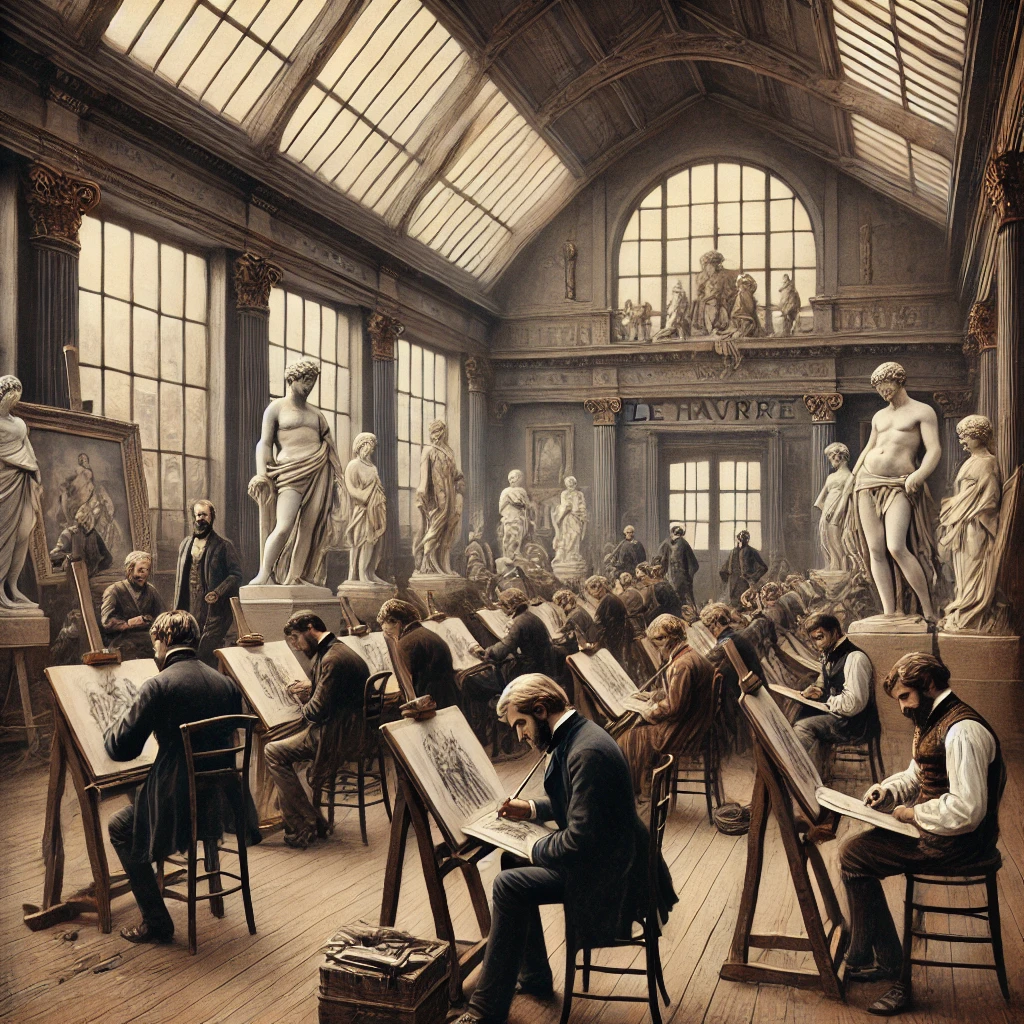
بدأ تعليم مونيه الرسمي في الفن في عام 1851 عندما التحق بمدرسة لوهافر الثانوية للفنون. وكان من بين معلميه الأوائل جاك فرانسوا أوشارد ويوجين بودان، اللذان قدما له فكرة الرسم في الهواء الطلق. وأصبحت هذه التقنية مرادفة لاسمه. وقد غرس تأثير بودان العميق في مونيه تقديرًا عميقًا لالتقاط التأثيرات العابرة للضوء والجو.
ولكن طريق مونيه كان مليئاً بالعقبات. فقد لاقت أعماله المبكرة انتقادات شديدة، كما اضطره رفض والده دعم طموحاته الفنية إلى البحث عن الاستقرار المالي. وبعد فترة وجيزة قضاها في الخدمة العسكرية، والتي عززت رغبته في الرسم، عاد مونيه إلى باريس في عام 1862. والتحق بالأكاديمية السويسرية، حيث التقى بيير أوغست رينوار، وفريدريك بازيل، وألفريد سيسلي ـ وهم فنانون أصبحوا فيما بعد شخصيات محورية في الحركة الانطباعية.
ولادة الانطباعية
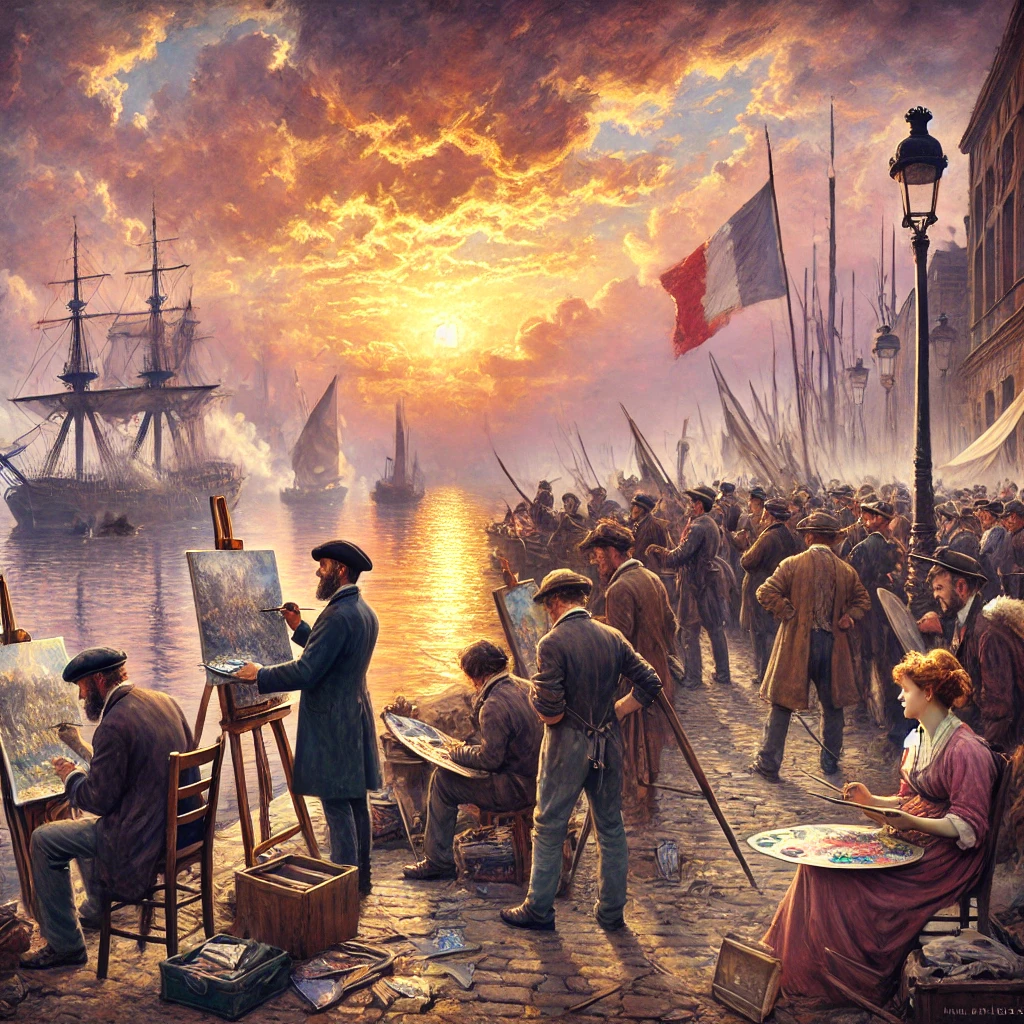
كانت فترة الستينيات من القرن التاسع عشر فترة مضطربة في التاريخ الفرنسي، حيث اتسمت بالاضطرابات السياسية والحرب الفرنسية البروسية. وفي ظل هذه الخلفية، سعى مونيه ومعاصروه إلى التحرر من الأعراف الصارمة التي يفرضها نظام الفن الذي تجسده أكاديمية الفنون الجميلة. وقد أصابهم الإحباط من التركيز التقليدي على الموضوعات التاريخية والأسطورية، ففضلوا بدلاً من ذلك مشاهد الحياة اليومية المرسومة بضربات فرشاة فضفاضة وألوان نابضة بالحياة.
بلغ النهج الثوري لمونيه ذروته في عام 1872 مع إنشاء "انطباع، شروق الشمس" (Impression, Soleil Levant). وقد عُرضت هذه اللوحة، التي تصور ميناء لوهافر عند شروق الشمس، في أول معرض مستقل نظمه مونيه وزملاؤه في عام 1874. وقد أطلق أحد النقاد على المجموعة اسم "الانطباعيين" بسخرية، وهو المصطلح الذي تبناه الفنانون بفخر. وقد دل هذا على انحرافهم عن المعايير الأكاديمية والتركيز على التقاط لحظات عابرة من الضوء واللون.
التحديات والإنجازات
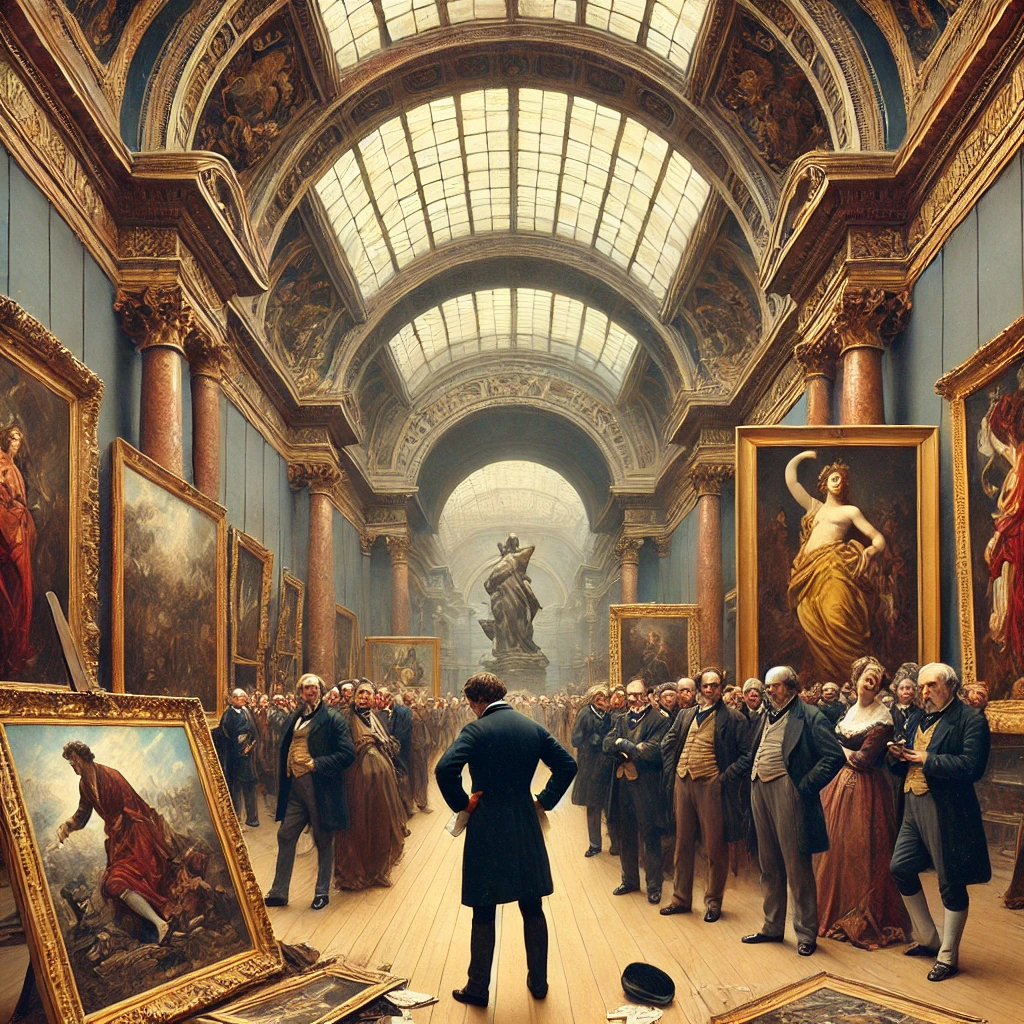
وعلى الرغم من ولادة الانطباعية، كانت مسيرة مونيه محفوفة بالتحديات. فقد رفض الصالون، المعرض الفني الرسمي لأكاديمية الفنون الجميلة في باريس، أعماله في كثير من الأحيان، كما عانى من صعوبات مالية. وكان صالون باريس هو المعرض الفني الأكثر شهرة في فرنسا خلال القرن التاسع عشر، وكان اكتساب القبول هناك أمرًا بالغ الأهمية بالنسبة للفنانين في ذلك الوقت. وكان يتنقل كثيرًا بحثًا عن الإلهام وظروف المعيشة المعقولة. ومع ذلك، بدا أن هذه الصعوبات لم تفعل سوى تعزيز عزيمته. وقد أدى استكشاف مونيه المستمر للضوء والطقس والفصول إلى ظهور بعض من أكثر سلاسل أعماله شهرة، مثل "أكوام القش" و"كاتدرائية روان" و"زنابق الماء".
ولعل أفضل ما يتجلى في أعمال مونيه في سلسلة "كاتدرائية روان"، التي رسمها بين عامي 1892 و1894، هو هوسه بالتقاط تأثيرات الضوء. فقد استأجر مونيه مساحة أمام الكاتدرائية ورسم الواجهة بدقة في أوقات مختلفة من اليوم وفي ظل ظروف جوية متفاوتة. وكانت النتيجة مجموعة مذهلة من اللوحات التي تنقل المظهر المتغير باستمرار للكاتدرائية اعتمادًا على الضوء. وقد عزز هذا الإنجاز سمعة مونيه باعتباره أستاذًا في الانطباعية.
السياق التاريخي والتأثير
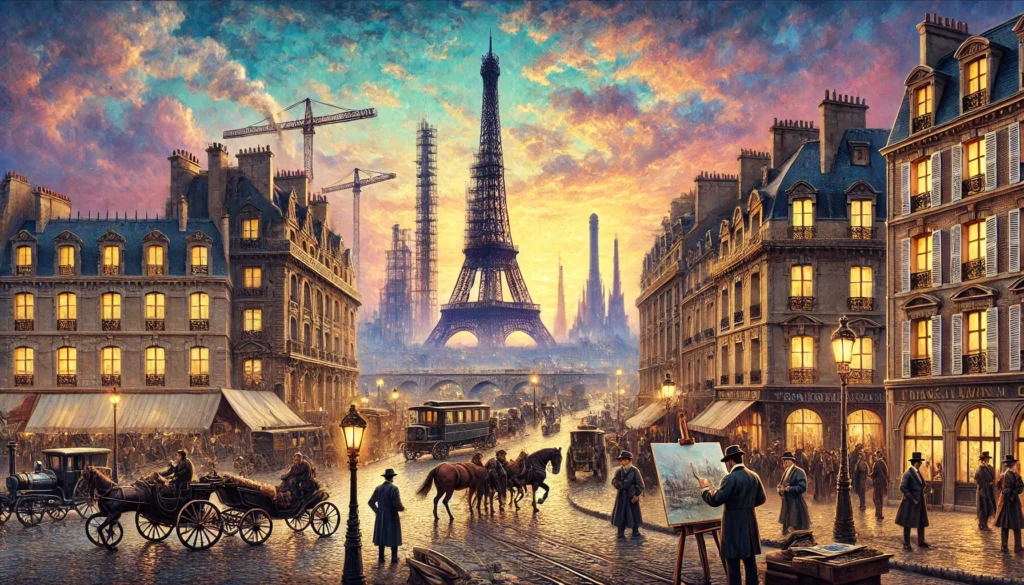
كانت أواخر القرن التاسع عشر وأوائل القرن العشرين أوقاتًا شهدت تغيرات كبيرة في فرنسا والعالم. فقد أدت الثورة الصناعية إلى تحويل المدن، وأعادت الاكتشافات العلمية الجديدة تشكيل فهم المجتمع للعالم. وقد أثرت هذه التطورات بشكل عميق على مونيه وزملائه الانطباعيين، الذين سعوا إلى التقاط التجربة الحديثة في أعمالهم.
تعكس لوحات مونيه شغف العصر بالسرعة والتغيير ومرور الوقت. سمحت له تقنيته الثورية للرسم في الهواء الطلق بالتقاط التفاعل الديناميكي بين الضوء والجو في الوقت الفعلي. تردد صدى هذا النهج مع العالم المتغير بسرعة من حوله، ورمز عمله إلى روح الإبداع والحداثة التي حددت أواخر القرن التاسع عشر.
الصداقات والتعاون
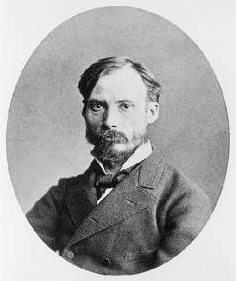
الصورة لمؤلف غير معروف، Musée d'Orsay، Dist. RMN-Grand Palais / باتريس شميدت، ملكية عامة.
كانت رحلة مونيه الفنية متشابكة بشكل عميق مع علاقاته بالفنانين الآخرين. فقد عززت صداقته مع رينوار وسيسلي وبازيل روح التعاون التي كانت حاسمة في تطوير الانطباعية. وكثيراً ما كانت المجموعة ترسم معاً، وتتبادل الأفكار والتقنيات التي دفعت كل منها الأخرى إلى آفاق إبداعية جديدة.
ولكن هذه العلاقات كانت تحتاج إلى بعض التوتر. فقد أدى التزام مونيه برؤيته في بعض الأحيان إلى خلافات، وخاصة بشأن تسويق أعمالهما. وعلى الرغم من هذه التحديات، كانت روح الرفاقية بين الانطباعيين بمثابة القوة الدافعة وراء نجاح الحركة.
تطور الأسلوب والتراث

تقدمت مسيرة مونيه، وتطور أسلوبه من الألوان الزاهية النابضة بالحياة في أعماله المبكرة إلى لوحات أكثر نعومة وهدوءًا في سنواته الأخيرة. ويتجلى هذا التحول بشكل واضح في سلسلة "زنابق الماء" التي أنشأها في حديقته في جيفرني، حيث عاش من عام 1883 حتى وفاته. وتمثل هذه اللوحات، التي تتميز بحجمها الكبير وجودتها الغامرة، افتتان مونيه مدى الحياة بالطبيعة ورغبته في التقاط جمالها الزائل.
يمتد تأثير مونيه إلى ما هو أبعد من حدود الانطباعية. لقد ألهمت تقنياته المبتكرة وسعيه الدؤوب لالتقاط تأثيرات الضوء عددًا لا يحصى من الفنانين والحركات، من ما بعد الانطباعية إلى التعبيرية التجريدية. لقد أرسى عمله الأساس للفن الحديث، متحديًا المفاهيم التقليدية للتمثيل وفتح الباب أمام أشكال جديدة من التعبير.
نهاية الحياة والتأمل في الإرث

توفي كلود مونيه في الخامس من ديسمبر عام 1926 عن عمر يناهز 86 عامًا. وقد ترك وراءه مجموعة من الأعمال التي أحدثت ثورة في عالم الفن وقدمت طريقة جديدة لرؤية العالم. ولا يقتصر إرث مونيه على اللوحات التي أبدعها، بل يمتد إلى الحركة التي ساعد في ميلادها - وهي الحركة التي احتفلت بجمال الحياة اليومية والطبيعة المتغيرة باستمرار للواقع.
واليوم، تُحتفى المتاحف والمعارض الفنية في مختلف أنحاء العالم بأعمال مونيه، ويتجلى تأثيره جليًا في أعمال الفنانين المعاصرين. ولا تزال لوحاته تأسر عشاق الفن، وتقدم لمحة عن العالم من خلال عيون أحد أعظم الفنانين في التاريخ. وبينما نتأمل حياة مونيه وإرثه، فمن الواضح أن مساهماته في الفن لم تكن تتعلق بالتقنية فحسب، بل كانت تتعلق بطريقة رؤية وفهم العالم التي تلقى صدى لدى الجماهير اليوم.
"أكوام القش" (المعروفة أيضًا باسم "الأشياء الصغيرة")
بيعت لوحة "أكوام القش" للرسام كلود مونيه (المعروفة أيضًا باسم "القوارير") بمبلغ قياسي بلغ 110.7 مليون دولار في مزاد علني أقيم في نيويورك. سوثبي بيعت هذه اللوحة في مزاد علني في نيويورك في 14 مايو 2019. وحقق هذا البيع رقما قياسيا جديدا في مزاد للفنان والفن الانطباعي.
بينما نحتفل بحياة وإرث كلود مونيه على Exceptional.Art، ندعو عشاق الفن والجامعين على حد سواء لاستكشاف
معرض على الانترنت
، حيث يمكنك
شراء الفن عبر الإنترنت
واكتشف
قطع فنية فريدة من نوعها
التي تجسد روح الانطباعية. سواء كنت
جامع الفن
أو ببساطة نقدر جمال
تلوين
، ملكنا
معرض فني على الانترنت
يقدم مجموعة مختارة من الأعمال التي تكرم أساتذة عظماء مثل مونيه. استكشف
الاتجاهات في الفن
اليوم و تجد
الإلهام الفني
في
عملية فنية
و
فن الوسائط المختلطة
التي تستمر في التطور من الأسس التي وضعها فنانون مثل مونيه. تفضل بزيارة موقعنا اليوم وكن جزءًا من مجتمع الفن الذي يحتفل بالجمال الخالد للفن.
خاتمة
إن رحلة كلود مونيه من صبي صغير يرسم الرسوم الكاريكاتورية في لوهافر إلى أستاذ الانطباعية هي شهادة على تفانيه الذي لا يتزعزع في التقاط جمال العالم من حوله. لقد ترك عمله، الذي يتميز باستخدامه المبتكر للضوء والألوان، بصمة لا تمحى على عالم الفن. وبينما نكرم إرثه، نتذكر قوة الفن في تحويل إدراكنا للواقع وربطنا بالعالم بطرق عميقة.
من خلال التأمل في حياة مونيه وتأثير عمله، نكتسب تقديرًا أعمق للفن الذي لا يزال يلهمنا ويشكل تحديًا لنا. وبينما تستكشف المعارض على الانترنت وتتذكر مجموعات الفن المتاحة اليوم إرث كلود مونيه - وهو الإرث الذي لا يزال يشكل عالم الفن والطريقة التي نرى بها العالم.
الموارد المتاحة على الإنترنت:
جوجل للفنون والثقافة:https://artsandculture.google.com/entity/claude-monet/m01g5n
ويكيميديا كومنز:https://commons.wikimedia.org/wiki/Category:Claude_Monet
متحف المتروبوليتان للفنون (المتروبوليتان):
https://www.metmuseum.org/art/collection/search#!/search?artist=Monet,%20Claude$Claude%20Monet
متحف أورسيه:
المواقع المادية:
متحف أورسيه، باريس، فرنسا:
https://www.musee-orsay.fr/en
متحف مارموتان مونيه، باريس، فرنسا:
https://www.marmottan.fr/
المعرض الوطني، لندن، المملكة المتحدة:
معهد شيكاغو للفنون، الولايات المتحدة الأمريكية:
رينوار، سيسلي، وبازيل: صورة من قبل مؤلف غير معروف، متحف أورسيه، منطقة RMN-Grand Palais / باتريس شميدت، المجال العام.
